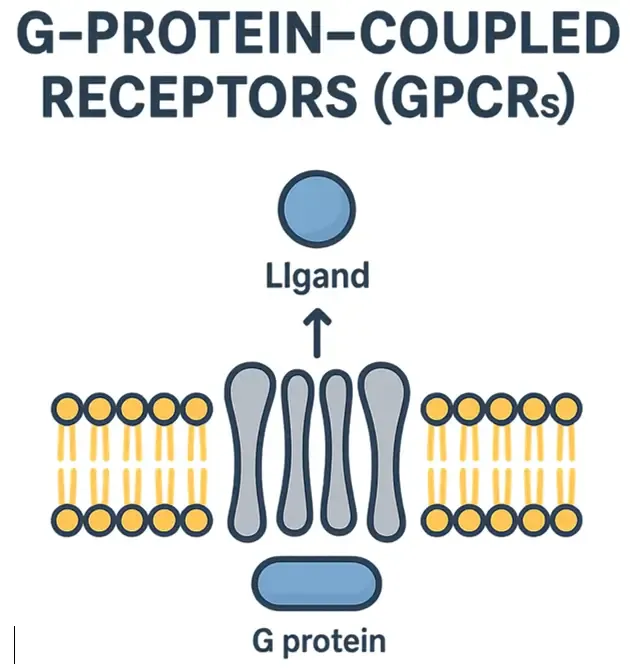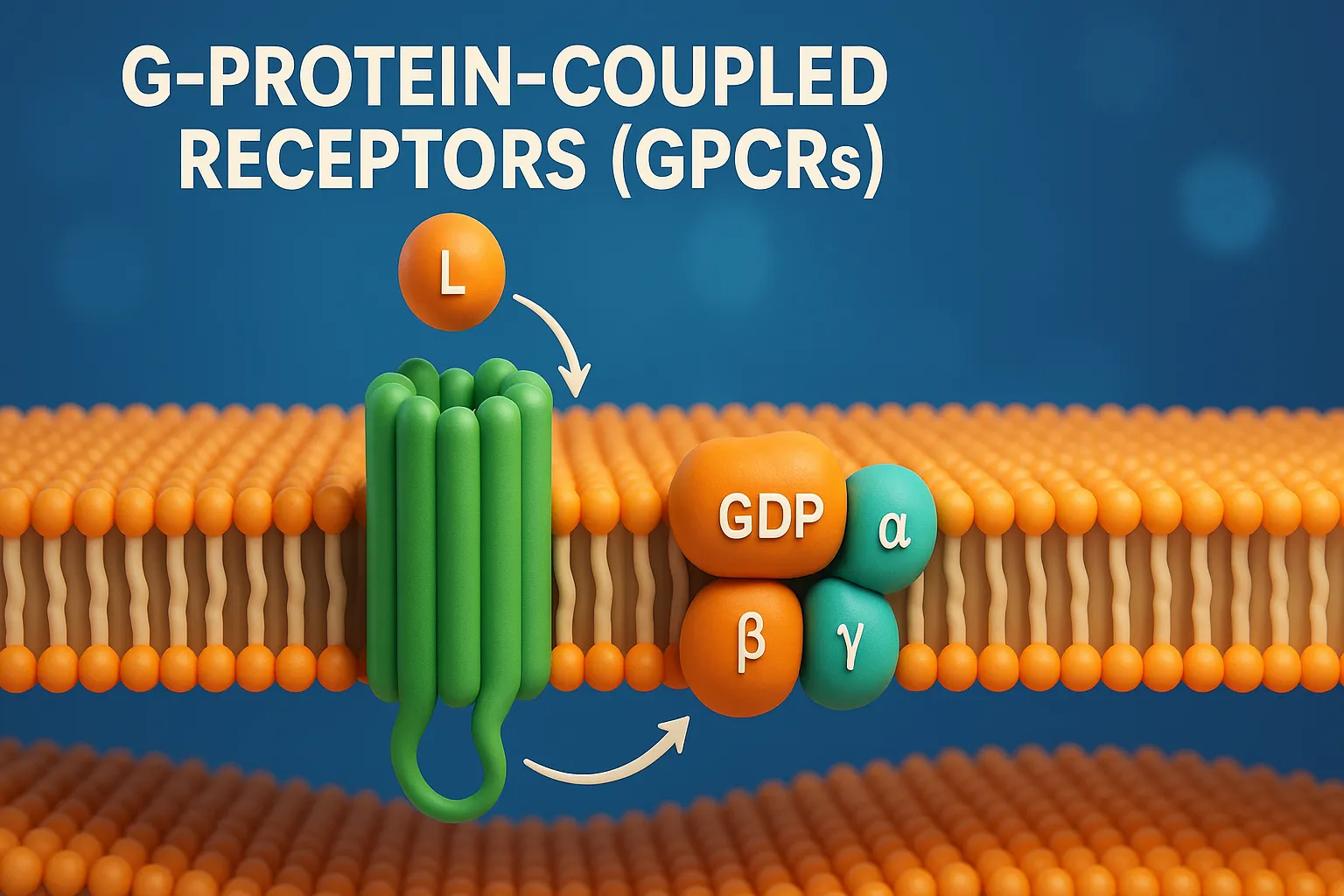GPCRs are membrane receptors that transmit signals via G-proteins, regulating many physiological processes.
Structure of GPCRs:
- Single polypeptide chain with 7 transmembrane α-helices
- Coupled to G-proteins (GTP-binding proteins) inside the cell

Mechanism of GPCRs:
- Agonist binds to receptor (outside of cell)
- Receptor undergoes conformational change
- Activates G-protein by exchanging GDP for GTP
- G-protein dissociates into α and βγ subunits
- These subunits regulate target proteins such as:
- Adenylyl cyclase → ↑ or ↓ cAMP
- Phospholipase C → produces IP₃ and DAG
- Ion channels
Second Messengers:
- cAMP → activates protein kinase A (PKA)
- IP₃ → increases intracellular Ca²⁺
- DAG → activates protein kinase C (PKC)
Response Time:
- Seconds to minutes
Examples:
- β-adrenergic receptors (↑ cAMP)
- Muscarinic M2 receptor (↓ cAMP)
- Dopamine receptors
- Histamine H1 receptor

